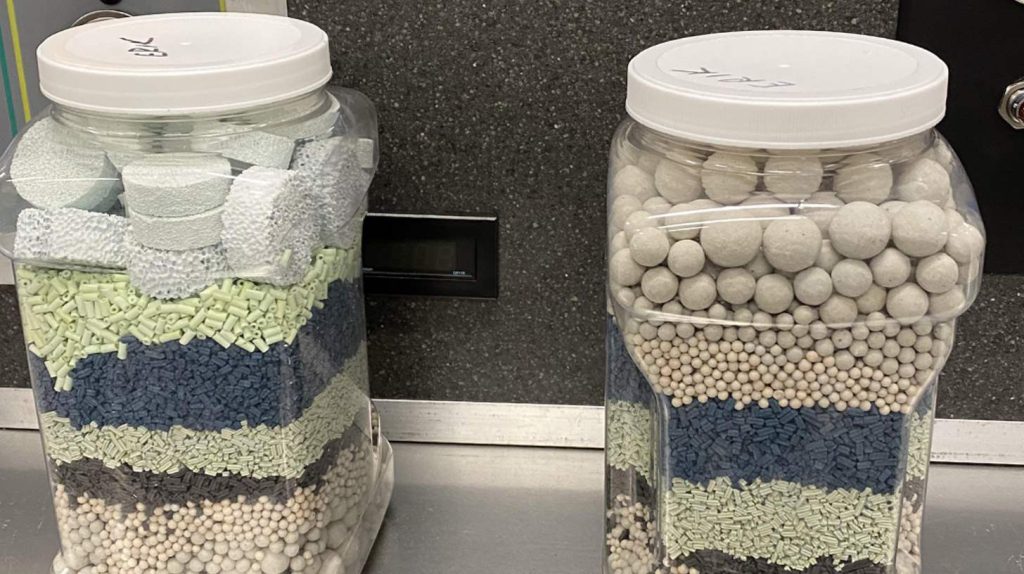When it comes to reclaiming metals, thermal desorption is the way to go. Processing spent catalysts in thermal desorption units (TDU) separates and reclaims the hydrocarbons, reducing the waste for disposal and prepares the solid materials for recovery of the metals.
Many of these petrochemical materials (such as spent catalysts) often contain valuable base metals that can be recycled at a high value.
Here are the top 4 metals that can be reclaimed via thermal desorption.

1- Molybdenum
Molybdenum-containing catalysts are mostly used in petroleum-refining industries for mild hydrogenation processes. These catalytic processes generate a huge quantity of spent catalysts.
Typically spent catalysts (including hydrotreating and hydrodesulfurization catalysts) contain from 3% to 20% Molybdenum (Mo).
These spent catalysts are classified as hazardous waste in the United States (K-171, K-172) and many other countries. Only processing facilities that are legally and environmentally allowed to import, process, and/or consume these manifested wastes. In these facilities, the Molybdenum content of the spent catalyst is reclaimed, along with some of the other contained metals including Nickel, Vanadium, and Cobalt.
There are also other forms of molybdenum catalyst that contain from 20% to 52% Molybdenum (including Cobalt, Bismuth, Tungsten, Nickel, Vanadium, etc.) which are all recyclable.
2-Vanadium
Vanadium plays a critical role in many industrial applications, including in steel production. When added in small amounts to certain ferrous alloys, Vanadium can improve alloy properties and performance. In addition, specific attributes of vanadium are often used for the production of new generation batteries, batteries that support the inclusion of renewable sources of electricity on electric grids.
Therefore, it is safe to say that plays vanadium a very significant role in the decarbonization process of the energy industry. Countries can make strategic decisions based on sustainability assessments of vanadium while comparing the demand and supply from primary and secondary sources.
Vanadium pentoxide (V2O5) is the end product of the process of heating vanadium with excess oxygen. Upon thermal treatment, V2O5 loses oxygen reversibly, making it a versatile catalyst.
Vanadium pentoxide can be used in the production of aircraft and jet engines and also produce vanadium electrolytes used in vanadium redox flow batteries, batteries that provide energy storage for electrical grids.
Learn more about catalyst recycling
We work with petroleum refineries, chemical manufacturers, fertilizer manufacturers, and syngas companies. Get more information about the materials we process.
3- Nickel
Increasing demand for nickel has pushed researchers to conduct intensive studies of its extraction methods from low-concentration ores and secondary resources. Extraction of nickel can be effectively performed from spent catalysts.
Spent catalysts may contain from 3% to 80% nickel, and are often used in many refining, petrochemical, pharmaceutical, industrial, and manufacturing processes. Nickel is widely used as a catalyst in several technological processes: including hydrogenation, hydro-desulphurization, and hydrorefin.
Nickel catalysts are commonly used for various industrial processes such as hydrogenation reactions, hydro-treating, steam reforming, carbon mono-oxide conversion methanation, and ammonia synthesis.
As of July 3, 2024 the price of nickel is $17,498.01 per metric ton. Therefore, recovery and resale of nickel from spent catalysts is very profitable. Not sure where we got this price from on metal 3 it is not correct
4- Cobalt
Cobalt helps with enabling a greener society by acting as a catalyst in desulphurization reactions. Desulphurization reactions remove sulfur from natural gas and from refined petroleum products (including gasoline and diesel) used in cars, airplanes, ships, gas/oil-burning power plants, and residential and industrial furnaces.
Cobalt catalysts also enable a greener society by lowering the activation energy (e.g. pressure, temperature) needed for industrial processes, such as the production of recyclable plastics. In other words, less energy is needed to obtain the same yield, which in turn means fewer carbon emissions.
References
Vanadium sustainability in the context of innovative recycling and sourcing development –
https://www.sciencedirect.com/science/article/pii/S0956053X20301707
SPENT CATALYST RECYCLING –
https://www.shell-amg.com/spent-catalyst-recycling.html
Extraction of Nickel from Spent Catalyst of Primary Reformer –
https://juniperpublishers.com/rapsci/pdf/RAPSCI.MS.ID.555690.pdf
Catalysts – https://www.cobaltinstitute.org/catalysts.html



